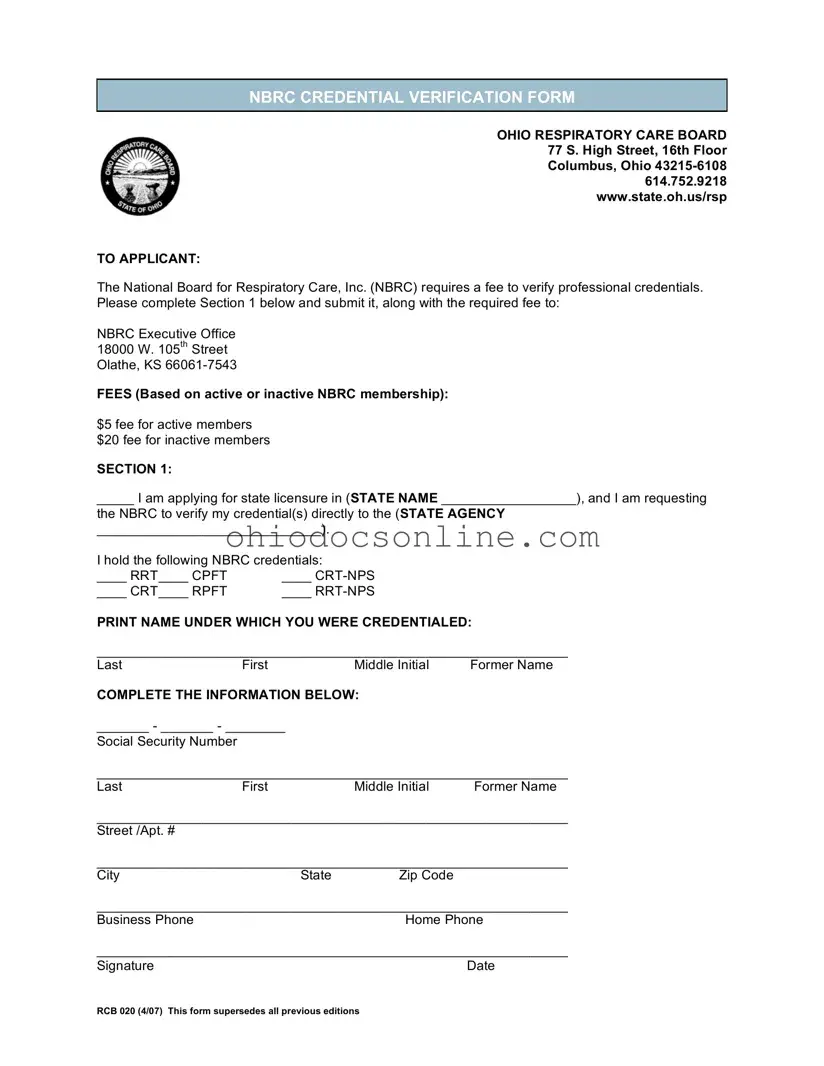Ohio Rcb 020 Template in PDF
The Ohio RCB 020 form is a credential verification document required by the National Board for Respiratory Care (NBRC) for applicants seeking state licensure in Ohio. This form facilitates the verification of professional credentials and includes a fee structure based on NBRC membership status. Completing this form accurately is essential for a smooth licensure process.
Open Editor
